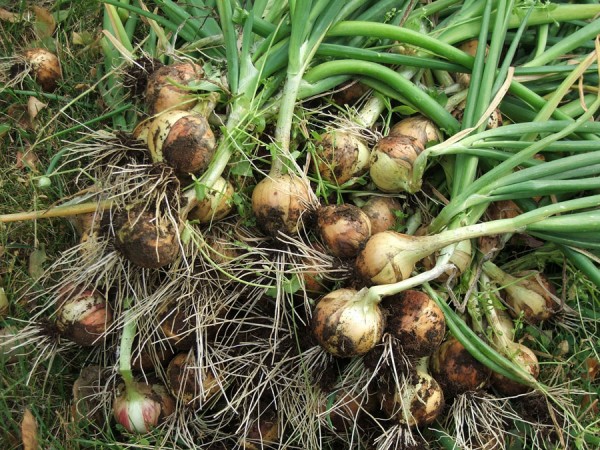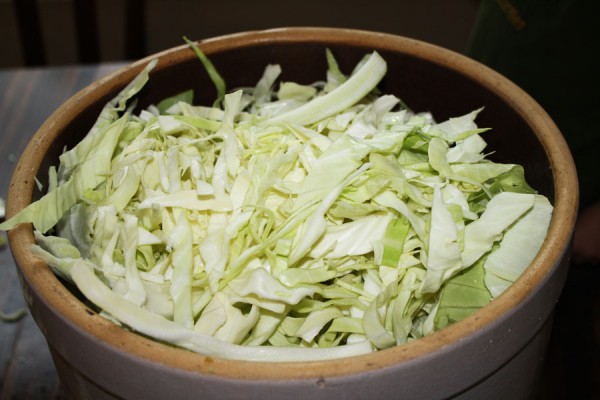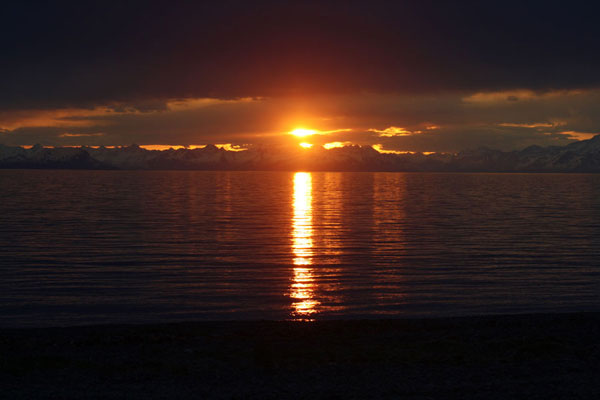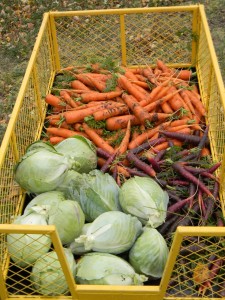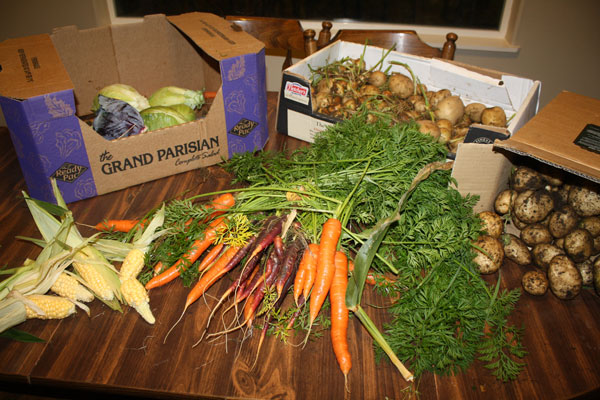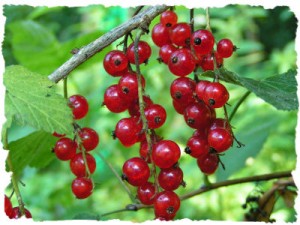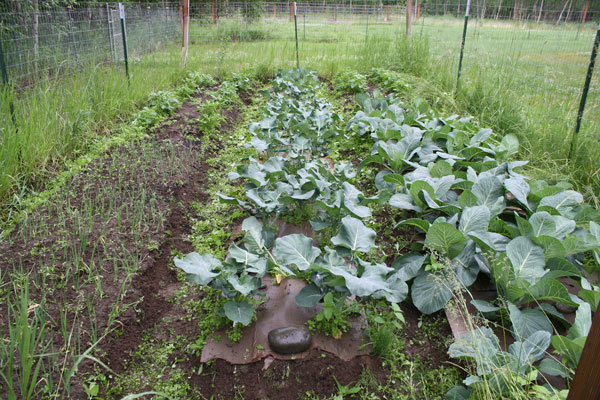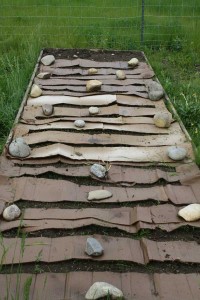Wild Harvest
A garden update: lessons learned and a lot of onions
Fall is in the air, the leaves are quickly turning colors, and we’ll have the first frost in the next few weeks.
Once again, I wasn’t able to give my veggie garden the attention it deserved. (My garden is at my dad’s house, a half-hour drive away). All that said, most of my crops grew successfully. Below are a few of my notes on the lessons I learned this year:
- Onions: This year, instead of buying onion starts through the mail, I started my onions in seeds in February. For whatever reason, this was a far better way to go. I think the onion starts one gets through the mail (which have entered dormancy) take a while to get going. This doesn’t allow enough time to mature. This year, I started the onions in seed-starting flats and then transplanted them into 2′” cell packs. I grew “Gunnison “variety onions from Johnnys seeds. They’re a storage-type onion and we should still be eating them in February.
- Winter squash: This year I tried to grow acorn squash . It was a gamble here in Alaska. The plant that I put under a plastic hoop created several squash,whereas the plants that were on raised mounds did not produce any fruit (more on that later). I used the “Jet” variety.
- Sweet Corn: I finally figured out how to successfully grow sweet corn! I start it indoors at the beginning of May and transplant it under a plastic hoop, removing the hoop when the corn gets too tall. Once the ears form, I wait until the last minute to harvest it. (It takes a long time for the ears to mature in our cool weather.) This year, I used a variety called “Spring Treat”. It made much larger ears than the “Yukon Chief ” variety that was developed in Alaska.
- Broccoli: I planted way too much broccoli this year and enjoyed a lot of it over the last couple of months. Big heads and lots of side-shoots this summer.
- Cabbage: The cabbage did ok this summer. I grew several different varieties, including storage cabbage, “giant cabbage” (OS Cross), and red cabbage. We had a wet fall, and the slugs went crazy on the cabbage. I harvested the gaint cabbage before the slugs affected them, and the storage cabbages tend to not get terribly damaged. In terms of storage cabbage, I may have planted them too closely together. I’ve used “Storage #4” variety for the last several years. They store very well, but they mature late and I’m not sure if they’re going to form good heads before the frost.
- Squash and Pumpkins: I tried squash, zucchini, and pumpkins again this year, but I placed them in a different spot. I tilled a new area of the yard and mounded the soil and covered the mounds with clear plastic. Unfortunately, I don’t think the plants got nearly enough water during the early part of the summer. None of the squash, zucchini, or pumpkins matured enough this year. They definitely need to be grown under plastic hoops in a warm location.
- Carrots: I started the carrots about a month late due to a failed planting idea. However, they grew fast and we’ll have plenty of carrots this year. I’m going to leave them in the ground for a lot longer this year — until we get a few frosts.
- Lettuce and Kale: The lettuce and kale did well this year. I tried another “baby salad mix”, but it bolted very quickly. I hardly got any cuttings out of it. The romaine and kale did very well; the only problem is that the romaine is not ready until mid-July, so we were a little short on salad greens for the first part of the summer.
- Gooseberries: My dad has a couple of healthy gooseberry plants that produce red gooseberries. The taste is exquisite, and they grow to be almost the size of grapes. I easily picked three pounds off of the bushes, and will be trying a 1 gallon batch of gooseberry mead soon! (I’ll let you know how it turns out!)
Halibut fillets and a great weekend on the beach
We just got back from a fun but exhausting halibut fishing weekend. Our yearly hunting/gathering begins every Memorial Day weekend when my wife’s extended family, and about half of the congregation, travels 5 hours south and spends the weekend camping on the beach and fishing for halibut. We fish from 12ft zodiacs, which can be fairly thrilling when the waves are up. Although all of the fish were small this year, we did well and came home with a good portion of halibut meat. The weather was good, and my oldest son went out on the boat for the first time. He was pretty impressed, though he’s still too young to put up a halibut.
Tonight: beer-battered halibut!

These are the boats we fish from. We usually put four people in a boat. With eight halibut, there's not a lot of room when we come back!
Next up: dipnetting for salmon in a couple of weeks!
Thus begins my adventures in beekeeping…
I received my package of bees yesterday and put them in the hive. I have to say, the experience of dumping 4lbs of bees out of a box in front of me was…unsettling. But they’re cute little buggers, and it was pretty cold yesterday, making them pretty lathargic. More updates to come over the summer!
[portfolio_slideshow include=”447,449,448,452,453,456,457,454,451,455,450″]
The last of the harvest
We had snow for the first time yesterday; big flakes came down for about an hour, but nothing stuck. The temperatures quickly dropping (25F this morning) it was time to get the remaining veggies out of the garden.
Moose hunting season is almost over, which means the harvest season is coming to an end. We’ve got chicken, salmon, halibut, moose (and soon turkey) in the freezer; mead bubbling in the pantry; and carrots, onions, potatoes, and cabbage stored in the crawl space. I feel like I’m starting to live a legitimate “homesteading life.” Next year: bees, a chicken coop, and more garden boxes.
I love Alaska.
A final garden update
The growing season is quickly coming to an end. In all honesty, it has not been a good season here in southcentral Alaska. We broke records for consecutive days of rain, and the temperatures never got that impressive.
Here’s my recount of the growing season:
Cabbage:
All my cabbage did well, though the heads were fairly small. I’m not sure if that was a result of mulching with cardboard, or simply because of the weather. I’m hugely impressed with Johnny’s Storage #4 variety. They make incredibly dense heads, and I’m excited to see how long they will store this year.
Carrots:
As expected, the carrots did awesome this year. I grew a purple variety called Purple Haze, which turned out very well. They’re really sweet. I always grow Bolero as my storage variety, using pelleted seeds. Frankly, we’re going to have so many carrots this year, I’m not sure what I’m going to do.
Potatoes
The potatoes were a disappointment again this year. They start really well, but the leaves turned yellow halfway through the summer. I dug all the tubers this weeks, and while I probably have 30-40 lbs of potatoes, I should have had way more considering what I planted. I need to do more research on potatoe cultivation…
Lettuce/greens
Another great year for greens. I tried romaine for the first time, and they turned out great (but I had to wait until the end of July to harvest them). I also grew a baby salad mix this year. A six inch by three foot strip gave me probably a dozen cuttings, and the baby greens were never bitter. I’ll definitely rely on the salad mixes next year to keep us in fresh greens. The kale went crazy like every year.
Corn/pumpkins
As already mentioned I got ripe corn for the first time in four years. I think I’ve come up with a plan for next year to have a decent harvest. All of my transplanted corn matured, but none of the corn started from seed did, although those plants and ears are actually larger. The pumpkin vines all have cantaloupe-sized fruit on them, and our surprise indian summer has given them an extra week or two. I’m still not sure they’ll mature, but it was fun having them in the garden.
Onions
My onions are tiny again this year. I knew that I did not start them early enough, but I thought they would do better, as I was pretty diligent about weeding their corner of the garden. More research needs to be done on the onions too….
For the winter:
I really need to get a soil test done. I’ve been adding local organic fertilizer the last couple of years, but I need to see if my soils are lacking anything.
I’m going to try propagation this year with currants and gooseberries. I’ll post updates this winter or spring on my progress.
How to make raspberry-currant mead
I just put up my recipe for making mead. We finished picking 20lbs of wild currants about a week ago, and I have my first of two six gallon batches fermenting right now. I opened a bottle of last year’s mead the other day, and it was incredible!
Garden Update Part 2
Having just finished weeding my garden in the rain, I thought it might be a good idea to add a picture of its current state…
Garden Update Part 1
It’s been an incredibly busy summer, and as such, my blogging has suffered. This is my desperate attempt to catch up on what has been happening in the garden:
I planted in mid-May, which is a bit early for Alaska. Luckily, it was a very warm May and the plants did well. This year I experimented with using cardboard as mulch. I had a lot of big cardboard boxes left over from installing cabinets, and decided to lay them over my cabbage, broccoli, and carrots.
The cardboard has been working wonderfully on the cabbages and broccoli that are planted further apart. I simply used a utility knife to cut holes where I put in the transplants. It has eliminated the need for weeding, and does a great job of conserving soil moisture.
As you can see from the picture below, I had to use large rocks to hold the cardboard down.
The cardboard didn’t work as well on the carrots. The rows are too close together, and it means that the weeds are able to sneak through one side or the other.
More gardening updates to come!
- « Previous
- 1
- 2



